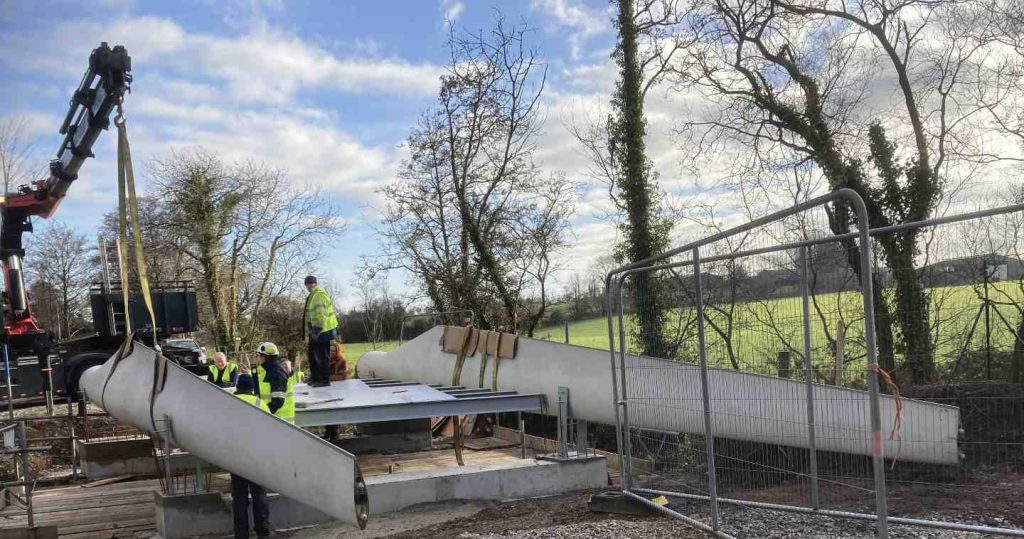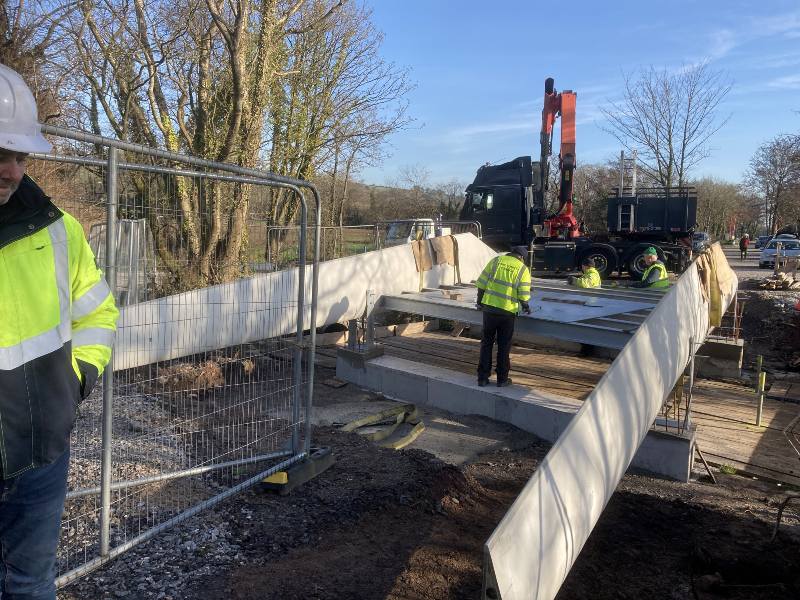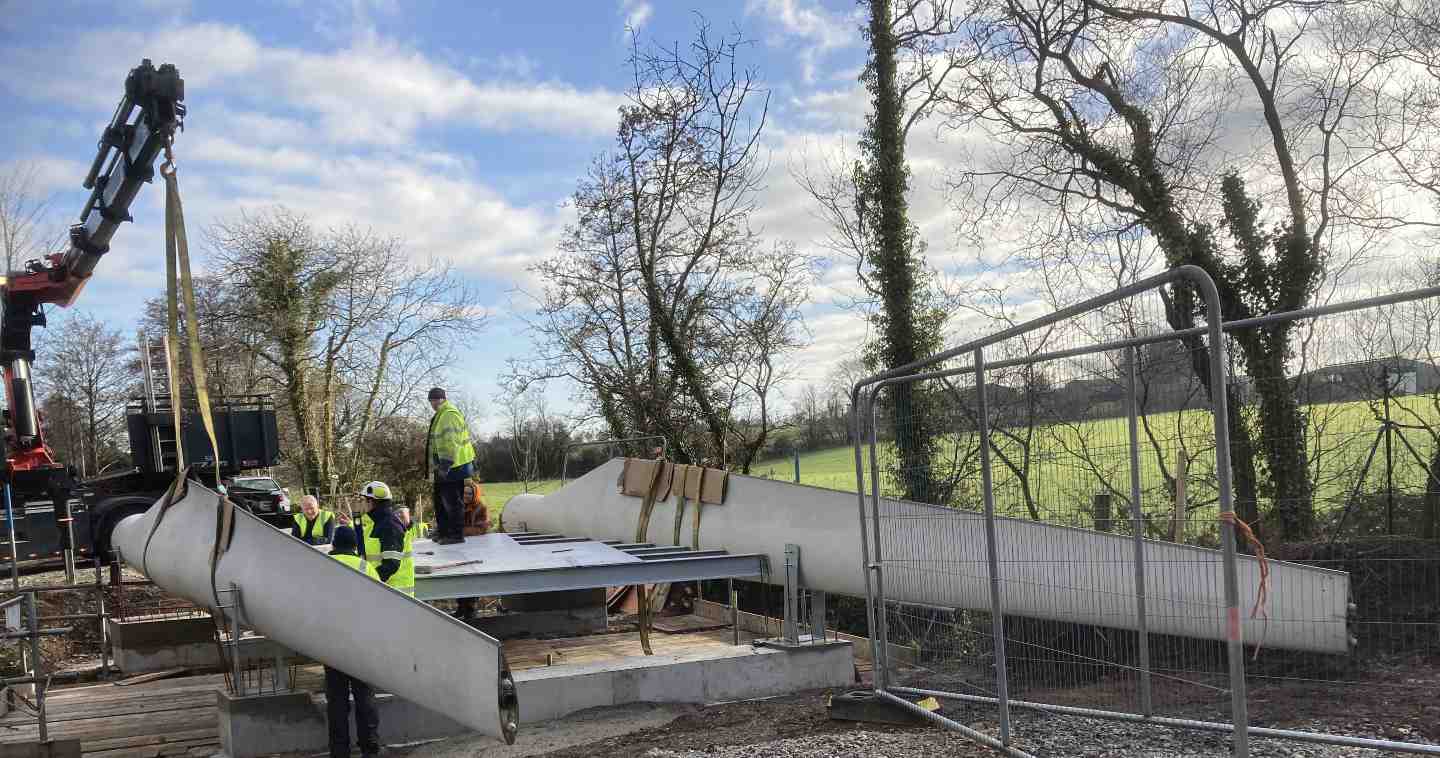
A new bridge has appeared in Ireland that’s made from decommissioned wind turbines.
The so-called BladeBridge, on the Midelton to Youghall greenway in County Cork, is designed for pedestrians, cyclists, and emergency vehicles.
Erected at the end of January, it is the brainchild of the Re-Wind Network, a research organisation dedicated to address the global problem of end-of-life disposal of wind turbine blades.
The estimated lifespan of non-biodegradable blades is twenty years, meaning that many will need to be disposed of in the near future.
The Cork blades were donated by Belfast-bast wind turbine company Everun, who explained, “Our engineering team decommissioned a N29 turbine and we were happy to supply the blades from the turbine for the bridge project.
“The blades were transported to County Cork where they will be repurposed as the main structural element on a number of small bridges spanning the Greenway with two blades laying apart horizontally, with a walkway in between.

“The blades have recently gone through destructive testing to ensure structural integrity with the rest being retained for the actual construction.”
The interdisciplinary Re-Wind research team, comprising experts from City University of New York, Georgia Institute of Technology, University College Cork, and Queen’s University Belfast, is seeking an alternative to unsustainable disposal methods such as landfill and incineration.
Re-Wind explain, “With the rapid development of wind energy technology in the past 15 years comes a new conundrum: How to dispose of the non-biodegradable blades in current wind turbines in a sustainable way.
“The problem is one of enormous scale on several levels: a typical 2.0 MW turbine has three 50m long blades containing around 20 tonnes of fibre reinforced polymer (FRP) composites. It is estimated that by 2050, 39.8 million tonnes of material from the global wind industry will await disposal.”
MORE: Wind Turbines Are Using Cameras and AI to See Birds –And Shut Down When They Approach
Lawrence C. Bank, Georgia Institute of Technology, says, “We’re exploring the potential reuse of the blades across architecture and engineering. Developing such methods can have a positive effect on air quality and water quality by decreasing a major source of non-biodegradeable waste”
Recycle the Good News; Share This Story…




















